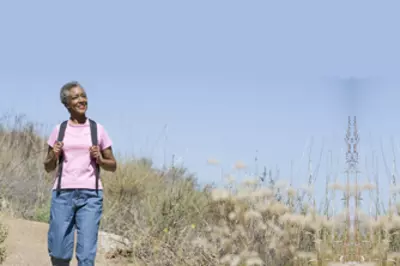The Summer of Wellbeing, Part I

"Wellbeing" is about more than health; it's a state of balance in your mind, body, and spirit. In order to achieve a state of wellbeing (which some might also describe as happiness or personal harmony), you have to look at, well, your whole being. Think of wellbeing as a bridge that requires the support of all its beams: if you only focus on your physical health and neglect your emotional needs, the bridge will collapse. Likewise, if you focus on relieving personal stress without strengthening your connection to your community or environment, you won't be able to achieve the sense of balance you are striving for.
Sound like a big job? Then let's start with the basics: the body.
The importance of movement
It's no secret that our bodies need physical activity in order to stay healthy, but you may not have considered the flipside: staying sedentary for long periods of time (eight hours in front of the computer at work, or an evening on the couch watching television) is actually dangerous. A Mayo Clinic researcher found that sitting down for long periods of time can have a seriously negative effect on the body's cholesterol levels and insulin effectiveness, and it can also cause the leg muscles to lose their ability to remove harmful lipo-proteins from the blood. This is scary news for those of us who have desk jobs and love to spend evenings catching up on Mad Men reruns--how can we work with our schedules and our habits to create the conditions for better physical health?
Start paying attention to your body
The first step in achieving long-lasting wellbeing is to simply be aware of yourself. That's it. The practice of mindfulness is thousands of years old, and for good reason--the more we pay attention to our habits and thoughts, the more likely we are to make healthy decisions for ourselves. So kick-start this Summer of Wellbeing with the simple practice of watching your body move throughout the day. How many hours do you sit? Do you take the stairs or the elevator? When does your body feel restless, fidgety, or tired? It might help to keep a journal the first week to track the movements of your body, or you may want to do a body scan to bring even more awareness to specific parts of your body.
After a few days, reflect on what you have noticed. Are you sitting for hours in front of a computer each day, or are you on your feet? What parts of your body feel sore or in need of stretching? At what points during the day did you see an opportunity to break out of old habits and begin new ones?
Move your body more
It's okay to start small: walk down the hall to say hello to your neighbor instead of emailing, do chair yoga at your desk at work, or take your dog one extra block during his evening walk. As you practice paying attention to your body, you'll notice more and more opportunities to keep your body moving during the day, and you'll be aware of which of those opportunities you take, and which ones you avoid.
Once you become more aware of the way you move your body every day, take our Fitness Assessment to determine where your physical-activity strengths and weaknesses are. Then read about what experts recommend for fitness and begin to incorporate the right kind of movement into your life. Try to incorporate a balance of aerobic activity and mindful movement, such as yoga or qigong, each week. (Don't forget: the more you move, the better chances you have of fighting off type 2 diabetes, heart disease, and certain types of cancer.)
Be gentle with yourself
Cultivating wellbeing is not an overnight project--it's a process that requires some motivation, mindfulness, and a lot of friendliness toward yourself. You may want to start out with ambitious goals that require big changes. But you don't need to try so hard (and risk running out of steam). Take small steps and appreciate the rewards. If you miss a few days, just start up again, without beating yourself up. Remember that you are on the path to wellbeing, and every part of that journey should contribute to your sense of harmony. Enjoy the trip!
This article is the first in a series. You can continue to the next article, "Feeding Your Body" if you wish.